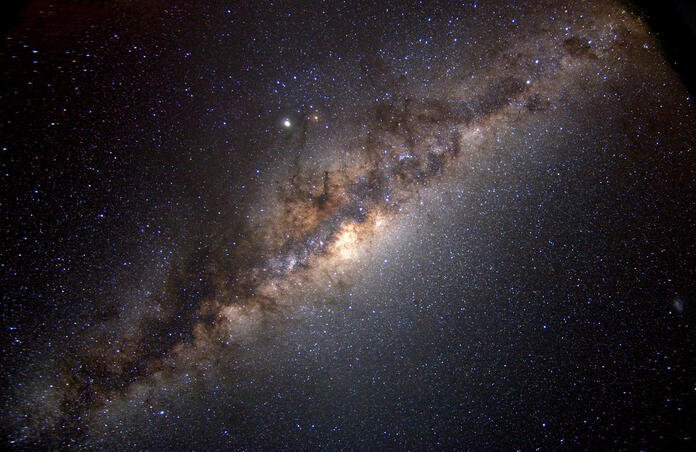Astronomers Just Discovered the Edge of the Milky Way Galaxy

A team of astronomers at Durham University in the UK have managed to calculate the exact diameter of the Milky Way galaxy—and it’s much bigger than anticipated. The team discovered that the total diameter of our galaxy measures nearly 2 million light-years, though much of that distance is littered with dust, gas, and dark matter. According to data collected by ESA’s Gaia mission to map the universe, the Milky Way’s most luminous disk, which is where our solar system resides, is only around 258,000 light-years in diameter. Surrounding the disk is a massive “dark matter halo” of dust and gas that extends the reach of the Milky Way galaxy much, much farther.
The Dark Matter Halo
This dark matter halo surrounding the Milky Way’s disk has fascinated astronomers for some time now. It’s full of ancient stars moving much faster than they should, especially considering the levels of detectable matter within. Combined with the fact that the stars in the halo are a great distance away from Sagittarius A*, the center of the galaxy, astronomers believe dark matter may be the culprit of the unusual speeds. Dark matter cannot be directly detected, but its mass effects everything surrounding it.

The team, which was led by Alis Deason, set out to analyze the dark matter halo and find the Milk Way’s actual edge. They created cosmological simulations of the halo surrounding the Milky Way, and of those surrounding neighboring galaxies. The team paid special attention to M31, the Andromeda galaxy, mainly because of its close gravitational interactions with the Milky Way. The simulations provided data on both the radial velocity and density of the neighboring galaxies, which the team used to determine the halo’s edge. After conducting numerous simulations, they found that, at a certain point, the velocities of small close-by dwarf galaxies took a noticeable plunge.
The team proceeded to compare their results to data collected from other telescopes. They found that dozens of other small galaxies followed a similar pattern—each had a sharp dip in radial velocity at a specific point. They slowly narrowed down the edge measurements to about 950,000 light-years from the center of the galaxy. They submitted their findings to the Monthly Notices of the Royal Astronomical Society, and the paper is available for review on arXiv.
Further Research
Though they extracted a distinct number from their calculations, they admit that the actual radius of the galaxy still needs to be analyzed further. Their research will ultimately prove useful for further studies, particularly for finding dark matter halos of other galaxies. “There is great hope that future data will provide a more robust and accurate measurement of the edge of the Milky Way and nearby Milky Way-mass galaxies than the one we have presented here.”